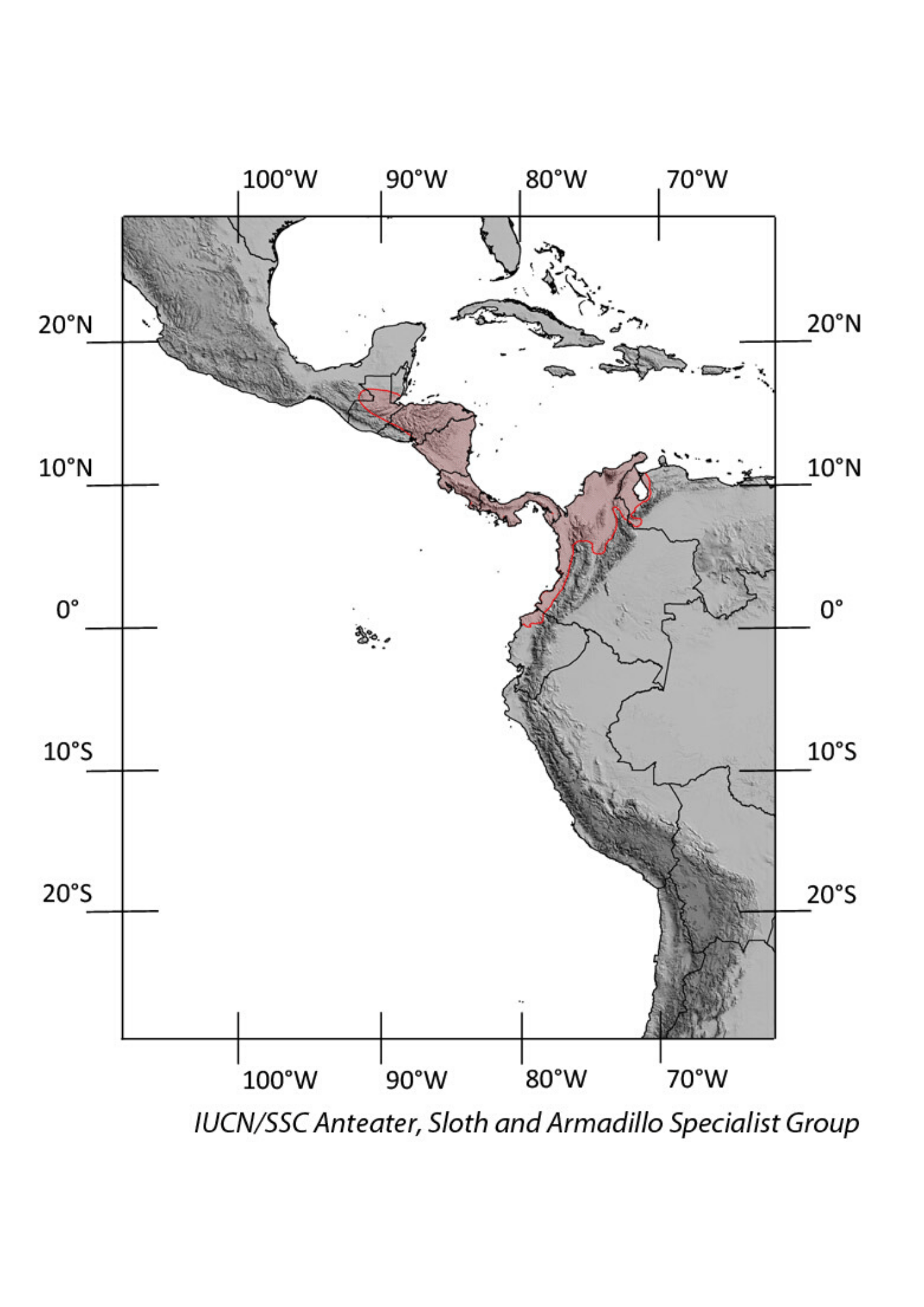Northern naked-tailed armadillo
(Cabassous centralis)
other common names
–
Taxonomy
Order: Cingulata
Family: Chlamyphoridae
Subfamily: Tolypeutinae


description
This species has a head-body length of 30–38 cm and a tail of 13–18 cm. It weighs 2–3.5 kg. Its dark gray carapace has a clear, pinkish band around its lower part and 11–13 movable bands. As the common name of this species implies, its tail is naked, i.e., it is only covered with thin, widely spaced plates, but lacks the complete armor present in other armadillos. Its ears, of 3–3.7 cm length, are moderately large and funnel-shaped, with their posterior face naked. The eyes are extremely small.

range
The northern naked-tailed armadillo ranges from southern Mexico, through Central America, to western Colombia, north-western Ecuador and north-western Venezuela. It occurs only west of the Andes, from sea level to around 3,000 m asl.

HaBITAT and ECOLOGy
Cabassous centralis occurs in dry, to moderately moist (mesic), deciduous, and semi-deciduous forests, at forest edges in rocky terrain and in open habitats such as dry savanna. It has also been recorded in tropical moist montane forests, as well as in the subparamo of the Colombian Central Andean highlands. It can be found in secondary forest habitat, and also tolerates a moderate mix of forest and agricultural land.
It is a solitary and nocturnal species, adapted to digging and life underground, because of which it is considered more fossorial than most other armadillo species. It rotates its body while digging its burrow. It is apparently rare and patchily distributed. Individuals are not commonly seen or captured, which may be due to its markedly fossorial habits.

reproduction
The northern naked-tailed armadillo probably gives birth to a single young; nevertheless, information on its reproduction is scarce.

diet
Cabassous centralis is insectivorous. It mainly feeds on ants and termites.

curious facts
In parts of its range in Mexico, the species is thought to be poisonous, although this local belief is not substantiated by scientific research.

threats
The exact threats to this species are not known. Throughout most of its range, C. centralis is not hunted for food because of its pungent odor and local beliefs. The species is, however, hunted in some parts of its known Andean distribution. Some Andean populations are facing severe impacts due to urbanization of their natural habitat. Although its sensitivity to habitat loss is not known and the species seems to tolerate some degree of habitat degradation, it seems to prefer primary, well-preserved forests. The severe habitat transformations are therefore likely to have a negative impact on the species. Furthermore, automobiles seem to be a major threat in human-dominated landscapes, with C. centralis representing 2% of the road kills of vertebrates in certain areas of Colombia.

Population trend
Unknown.

conservation status
Cabassous centralis is listed as Data Deficient due to limited knowledge on the current status of extant populations and a lack of available information on the impacts of habitat loss and other threats. Habitat destruction is, however, advancing at a fast pace throughout the range of C. centralis, which may soon justify its classification as Vulnerable under criterion A4c.